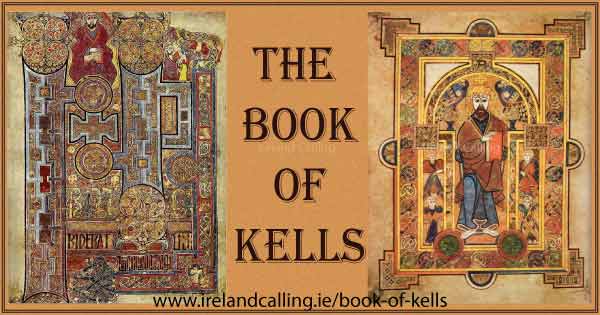The Book of Kells may be Ireland’s greatest art treasure but that meant nothing to raiders who ripped off its covers and either threw it away or buried it under the soil.
The book was created by Columban monks on the island of Iona in the late 8th or early 9th centuries. There was once a belief that St Columba himself may had started it but that has long since been discredited by scholars.
However, some experts believe the book may have been commissioned to mark the 200th anniversary of Columba’s death in 593.
Although the work began on Iona, it was probably continued at several other monasteries and perhaps completed at Kells in Co Meath in Ireland. There was a good reason for the change of location.
The ninth and 10th centuries were a turbulent time off the coasts of Scotland and Ireland as Viking raiders were constantly searching for treasure to plunder. Monasteries and abbeys were an easy target and many were attacked over and over again by the fierce Norsemen.
The Book of Kells, or the Book of Columba as it is sometimes known, would have been highly prized by the monks. Not only did it contain the four gospels of the New Testament, but its magnificent illustrations and calligraphy would have been considered a measure of their devotion to the glory of God.
The cover was also encrusted with gold leaf and jewels.
It’s thought the monks moved the book from Iona to locations in Ireland to protect it from falling into hands of the Viking raiders. It was eventually moved to the Abbey of Kells, probably during the 10th century.
We know it was there by the year 1007 because it is mentioned in the Annals of Ulster.
The annals record how the book was stolen: “The great Gospel of Columkille, (Columba) the chief relic of the Western World, was wickedly stolen during the night from the western sacristy of the great stone church at Cenannas on account of its wrought shrine”.
The annals go on to say that the book was found a few months later “under a sod” after either being thrown away or possibly hidden, by the thieves. The book’s cover with its jewels and gold had been ripped off and was never recovered.
The annals only refer to the book being stolen and make no mention of Viking raiders or any damage to the abbey so it’s likely the thieves were simply locals who had either heard about the precious book or had simply stumbled upon it after breaking into the sacristy.
It can’t be confirmed for certain that the book referred to in the annals is the Book of Kells but it’s thought highly likely because of it being referred to as the “great Gospel of Columkilla (Columba).
It’s also true that the original cover to the Book of Kells is still missing.
The wonderfully ornate illustrations and calligraphy in the Book of Kells have inspired artists for centuries and are still highly influential today.
It’s now possible to have your name written in the style of the Book of Kells with ornate initial letters and calligraphy that are direct replicas of work created by the monks more than a thousand years ago.
These examples also have the names written out in the ancient Ogham script, using vertical and horizontal lines.
